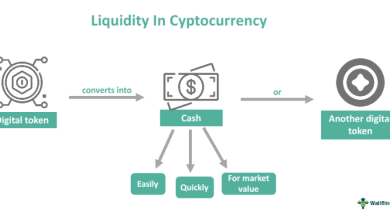Top 10 Mistakes New Crypto Investors Make

The cryptocurrency market, with its promise of high returns and innovative technology, has attracted millions of new investors since Bitcoin’s rise in 2009.
As of July 2025, the market is more accessible than ever, with platforms like Coinbase, Binance, and decentralized exchanges making it easy to buy and trade crypto.
However, the volatile and complex nature of cryptocurrencies can lead to costly mistakes for beginners. This article outlines the top 10 mistakes new crypto investors make and provides actionable advice to avoid them, helping newcomers navigate the crypto space safely and effectively.
1. Lack of Research
Mistake: Many new investors jump into crypto without understanding the technology, projects, or market dynamics, often swayed by hype on social media or platforms like X.
Why It’s a Problem: Investing in cryptocurrencies without research can lead to buying overvalued or fraudulent projects, resulting in significant losses.
How to Avoid:
-
Study the basics of blockchain, wallets, and exchanges.
-
Research a project’s whitepaper, team, and use case before investing.
-
Use reputable sources like CoinMarketCap, CoinGecko, or Binance Academy for information.
-
Be skeptical of promises of “guaranteed returns” or unverified claims.
2. Falling for FOMO (Fear of Missing Out)
Mistake: New investors often buy assets during price surges, driven by fear of missing out on gains, such as when Bitcoin hit $107,411 in 2024.
Why It’s a Problem: Buying at peak prices often leads to losses when the market corrects, as seen in the 2022 crash when Bitcoin fell from $69,000 to under $17,000.
How to Avoid:
-
Adopt a disciplined strategy like dollar-cost averaging (DCA), investing fixed amounts regularly to reduce the impact of volatility.
-
Avoid chasing hype-driven pumps, especially for meme coins like Dogecoin or SNORT.
-
Focus on long-term potential rather than short-term price spikes.
3. Ignoring Security Practices
Mistake: Failing to secure crypto assets, such as storing funds on exchanges or neglecting private key safety.
Why It’s a Problem: Exchange hacks (e.g., Mt. Gox in 2014) and phishing scams have cost investors billions. Losing private keys means permanent loss of funds.
How to Avoid:
-
Use hardware wallets (e.g., Ledger, Trezor) for long-term storage.
-
Enable two-factor authentication (2FA) on exchanges and wallets, preferably with authenticator apps.
-
Never share private keys or seed phrases, and store them offline.
-
Verify URLs and apps to avoid phishing scams.
4. Overinvesting or Using Borrowed Money
Mistake: Investing more than one can afford to lose or using borrowed funds (leverage) to trade crypto.
Why It’s a Problem: Crypto’s volatility can wipe out investments, and leverage amplifies losses, potentially leading to debt.
How to Avoid:
-
Only invest disposable income, typically 1–5% of your portfolio.
-
Avoid margin trading or loans unless you’re an experienced trader.
-
Set clear financial boundaries and stick to them.
5. Trading Without a Strategy
Mistake: Engaging in impulsive trading without a clear plan, such as buying and selling based on emotions or rumors.
Why It’s a Problem: Emotional trading often leads to buying high and selling low, locking in losses.
How to Avoid:
-
Develop a trading or investment strategy (e.g., long-term holding, swing trading).
-
Use technical analysis tools like moving averages or RSI to guide decisions.
-
Set entry and exit points and stick to them to avoid emotional reactions.
6. Falling for Scams and Fraudulent Projects
Mistake: Investing in Ponzi schemes, fake initial coin offerings (ICOs), or rug pulls, often promoted by influencers or fake accounts.
Why It’s a Problem: Scams are rampant, with billions lost to fraudulent projects annually. New investors are prime targets due to their inexperience.
How to Avoid:
-
Research project teams, roadmaps, and community feedback.
-
Avoid projects with anonymous developers or unrealistic promises.
-
Check for audits or partnerships with reputable firms.
-
Be wary of unsolicited messages or “exclusive” investment opportunities.
7. Neglecting Portfolio Diversification
Mistake: Putting all funds into a single cryptocurrency, such as only buying Bitcoin or a speculative altcoin.
Why It’s a Problem: A single asset’s failure or crash can devastate a portfolio, as seen with altcoins during the 2018 crypto winter.
How to Avoid:
-
Diversify across established coins (Bitcoin, Ethereum), stablecoins (USDT, USDC), and promising altcoins (Solana, Cardano).
-
Balance crypto investments with traditional assets like stocks or bonds.
-
Rebalance your portfolio periodically to manage risk.
8. Misunderstanding Market Cycles
Mistake: Failing to recognize crypto’s cyclical nature, such as Bitcoin’s four-year halving cycles, leading to poor timing of investments.
Why It’s a Problem: Buying at cycle peaks (e.g., late 2021) often results in losses during bear markets, while missing opportunities in bull runs.
How to Avoid:
-
Study historical market cycles, particularly Bitcoin halving events (e.g., 2020, 2024).
-
Monitor on-chain metrics like active addresses or transaction volumes for insights.
-
Be patient during bear markets, as they often precede significant rallies.
9. Relying on Unverified Advice
Mistake: Following tips from social media influencers, X posts, or unverified sources without due diligence.
Why It’s a Problem: Many influencers are paid to promote low-quality projects, leading followers to invest in scams or overhyped coins.
How to Avoid:
-
Cross-check advice with reputable sources like CoinDesk or industry reports.
-
Join credible communities (e.g., Reddit’s r/cryptocurrency) but verify information independently.
-
Focus on data-driven analysis over hype-driven narratives.
10. Panic Selling During Dips
Mistake: Selling assets during market downturns out of fear, locking in losses instead of waiting for recovery.
Why It’s a Problem: Crypto markets are volatile, but historical trends show recoveries after major dips (e.g., Bitcoin’s rebound from $17,000 in 2022 to $107,411 in 2024).
How to Avoid:
-
Adopt a long-term perspective, holding assets through volatility if fundamentals remain strong.
-
Set stop-loss orders to limit losses without emotional decisions.
-
Stay informed about market trends to avoid reacting impulsively to short-term drops.
Additional Tips for New Investors
-
Start Small: Begin with small investments to learn the market without significant risk.
-
Use Reputable Platforms: Stick to established exchanges like Coinbase, Binance, or Kraken with strong security measures.
-
Stay Updated: Follow regulatory news and technological developments, as they heavily impact prices.
-
Learn Continuously: Take free courses on platforms like Coursera or Binance Academy to deepen your knowledge.
-
Manage Expectations: Understand that crypto is high-risk, and not every investment will yield profits.
The Crypto Landscape in 2025
As of July 2025, the crypto market is maturing but remains volatile. Bitcoin trades between $50,000 and $80,000, Ethereum targets $4,000–$6,000, and altcoins like Solana and Cardano show promise. Institutional adoption, such as Bitcoin ETFs and corporate treasuries, adds stability, but scams, regulatory uncertainty, and market manipulation persist. New investors must prioritize education and caution to succeed in this dynamic space.





